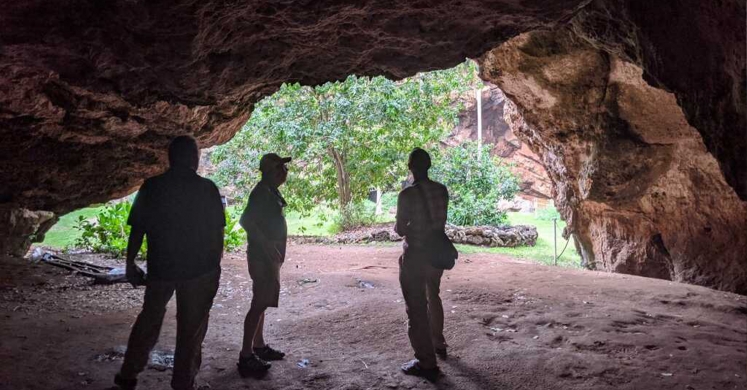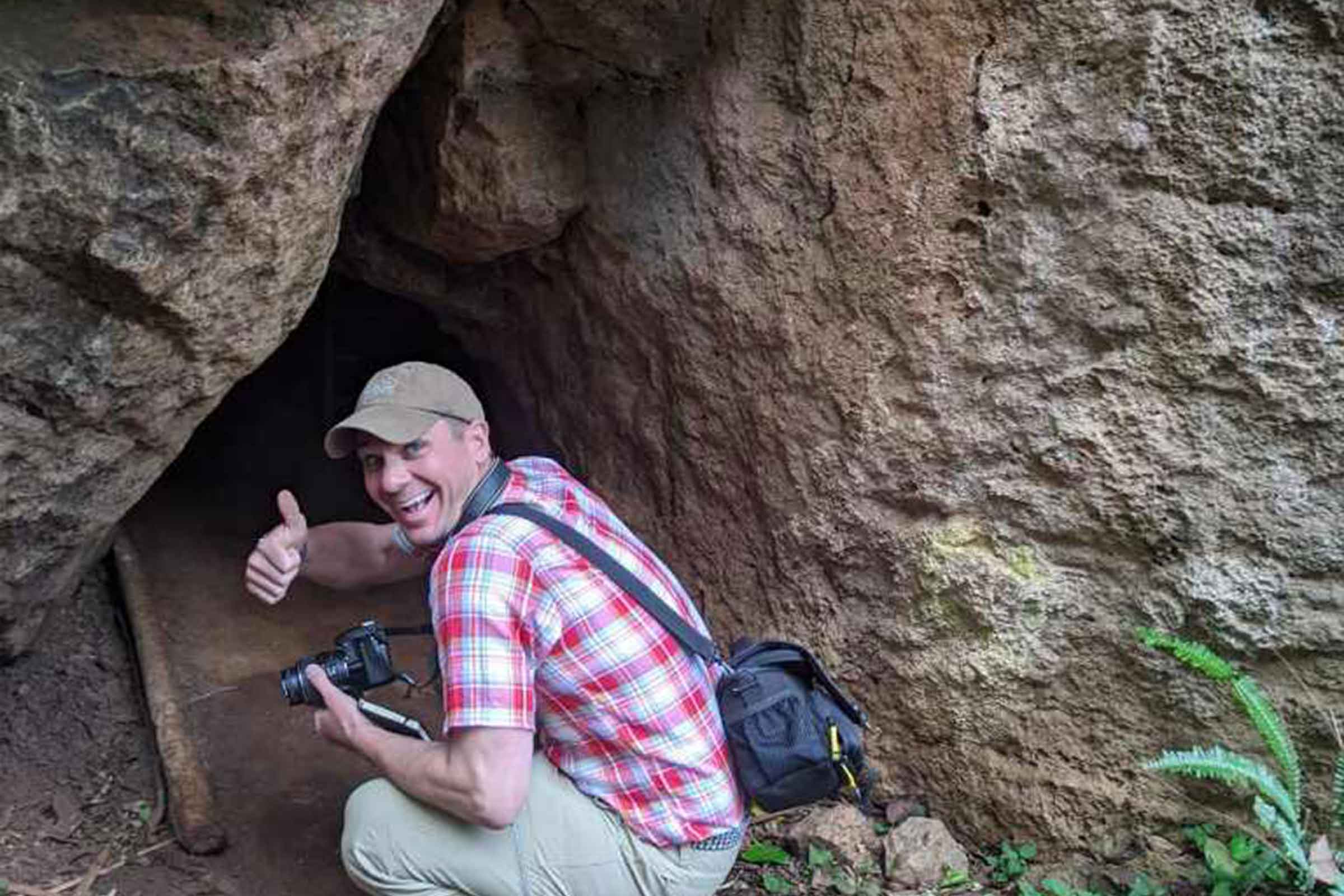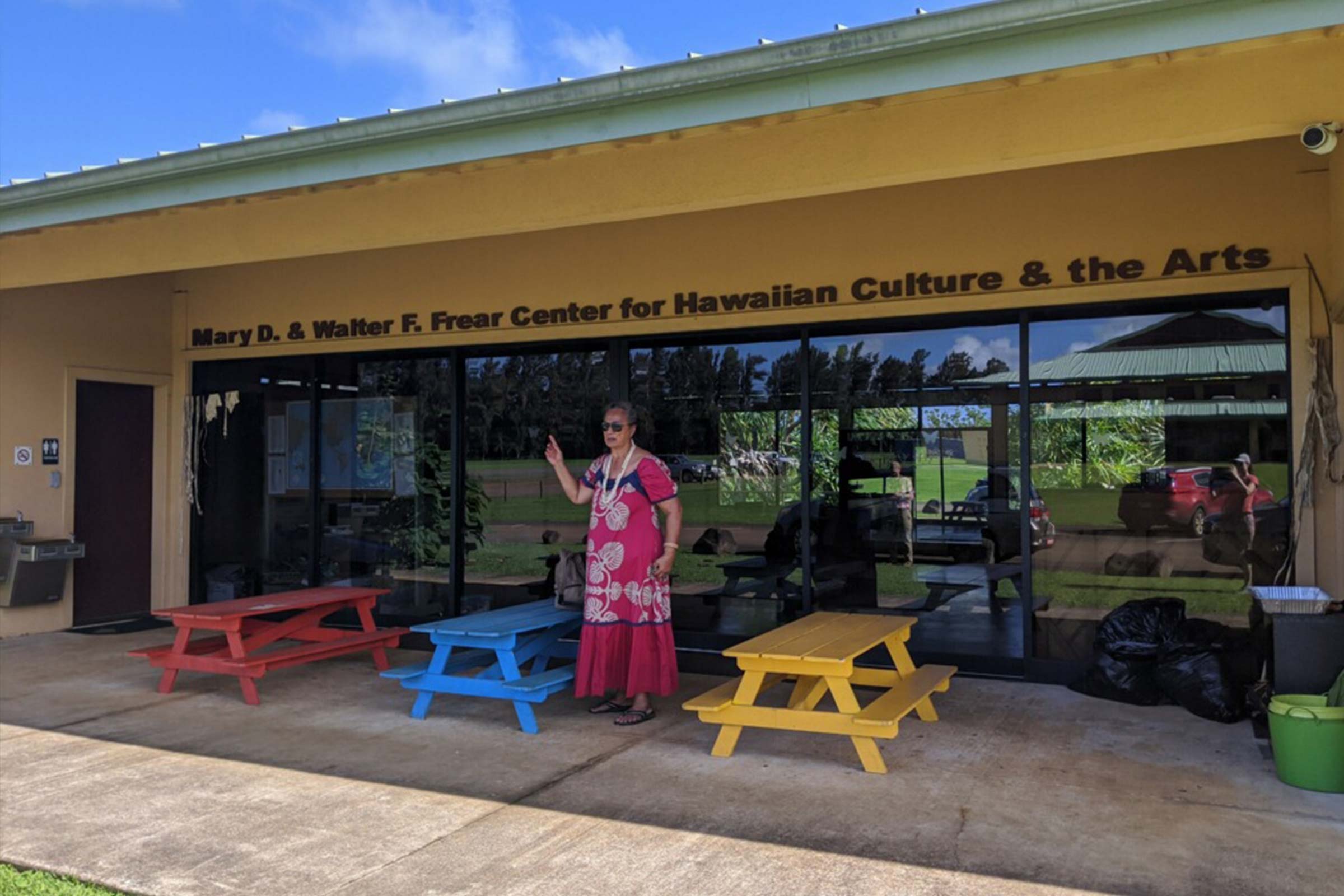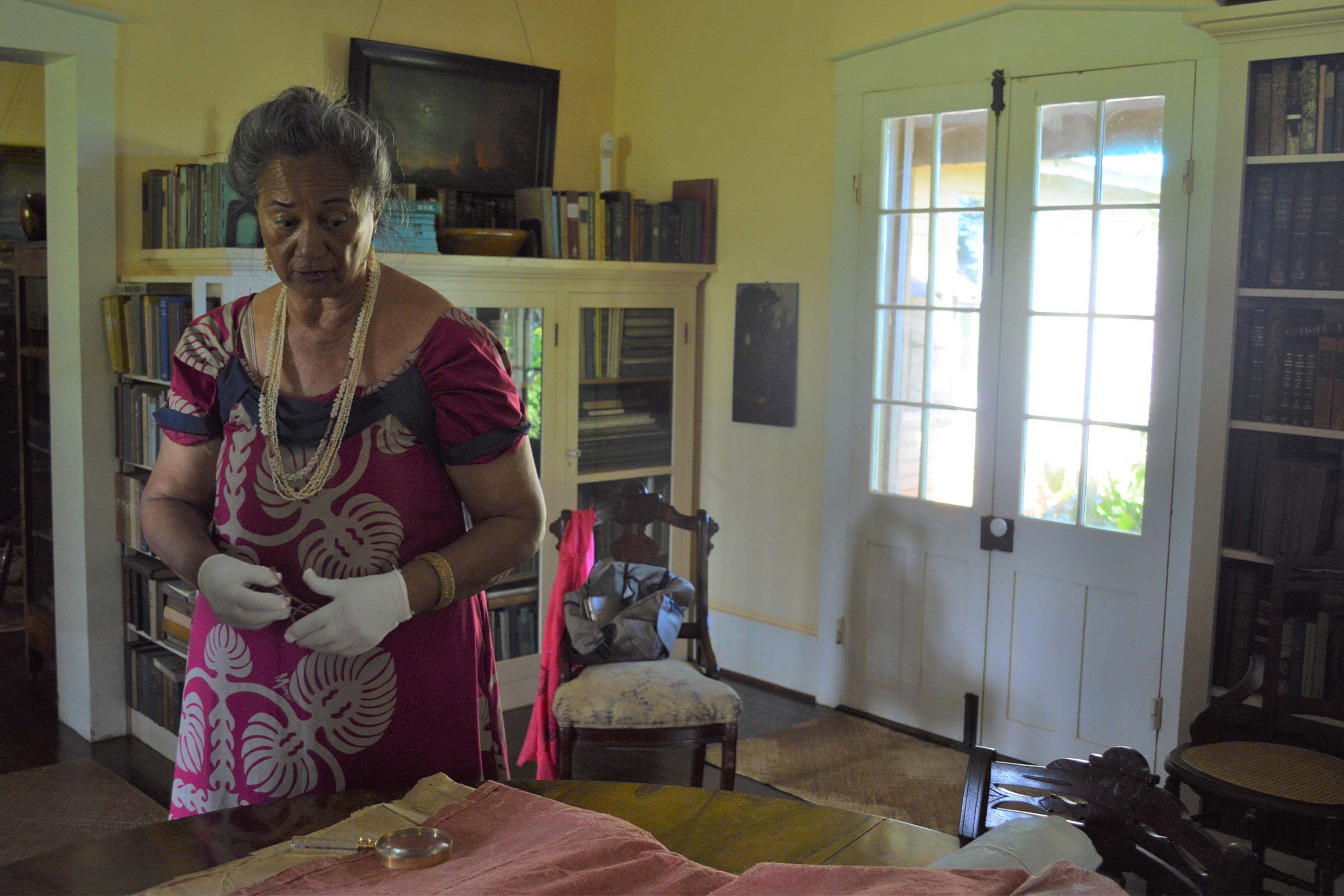Blog

Community in Kauai
As part of the three-year planning and design process behind our upcoming Tropical Forest exhibit, Julianna Razryadov and Adam Haas are traveling to Hawaii to study first-hand the region’s biodiversity hotspots, natural resources and culture. Follow their adventures!
The Makauwahi Cave Reserve is run by Lida and Dr. Burney. We got a chance to tour it with them and Mike DeMotta, head curator of living collections at the National Tropical Botanical Gardens. This land is a combination extractive biocultural reserve and archeological well spring. The incredibly unique site encompasses the right conditions to have preserved everything from bird bones to leaf imprints, seeds and spores. Four extinct bird species have been described using discoveries from this site so far. This number does not include the bones that are currently being reviewed to determine if they comprise a previously undescribed species. Bones of 45 species of birds have been unearthed on this small archeological site!

The site itself is a cave whose roof collapsed to become a sinkhole. The cave’s tunnels run long into the earth; we only got to experience the entrance. The sinkhole itself has become a tourist destination. Within it is a carefully cultivated garden. The plant life chosen for display here are all found commonly within the fossil record of the dig. In fact, since this biological community (coastal dry tropical forest) is now so rare on the islands — comprising only 5% of the original landmass with this type of ecosystem with no native communities of this type found on Kauai — the plant composition on the reserve is informed largely by this fossilized record.
The scientific endeavor continues to deliver unique and valuable information to the scientific community. This work is bolstered by the Burneys’ commitment to the communities they work in. The reserve has a close relationship with the National Tropical Botanical Garden — Mike DeMotta is a regular guest. They discuss growing and propagating, building human and plant communities, always learning and talking. They also maintain close connections with the community — Sabra Kauaka, a renowned traditional kapa (clothe) maker, is a good friend. All of their work, they say, is done with the goals of tying people closer to their land and rediscovering crafts and traditions. In fact, they have unearthed from the same site ancient crafts that are no longer practiced (or at least not widely so) and are trying to revive them by growing the appropriate materials and encouraging those interested to pick them and work them.

We got a taste for that community connection in the afternoon through our meeting with Sabra Kauka. We met her at the Grove Farm Homestead Museum and were joined by the museum’s curator, Moises Madayag. They led us into a room of a well-kept old plantation house that is now a museum. In its simple glass enclosed cupboards are some of Hawaii’s rich history of craft. There they have mats, carefully woven out of hala (Pandanus tectorius), poi (taro) beaters, boals, stone adze (ax) heads, and, most importantly, kapa (traditional clothe made out of wauke, or paper mulberry – Broussonetia papyrifera). This paper-like material is derived from the bark of this tree. It is wetted and then beaten, repeatedly, until it is very thin. Traditionally, layers of it are sewn together and this is used as blankets for warmth. The top layer is often marked with a final pattern from the beating stick and dyed using an array of natural plant dyes. Sabra, a master at her craft, was in awe at the pieces we were looking at. “Tell me kūpuna, how did you do this?” she kept saying. Kūpuna is the Hawaiian word for ancestor. Despite all that she knows, she does not know how exactly they made their kapa so thin, yet so strong, how the dye was prepared and applied, and so many other secrets of history — knowledge that is lost unless it is constantly practiced.

She led us back to her school, the Frear Center for Hawaiian Culture and the Arts, to show us the kapa she’s been working on. To our absolute delight and amazement she gave us the opportunity to beat her kapa! Adam and I are not the most coordinated, but we gave it our best.
This was an incredible experience. We are thrilled to bring these stories back to all of you.
Select photos © Julianna Razryadov and Paul g. Wiegman

